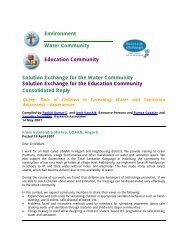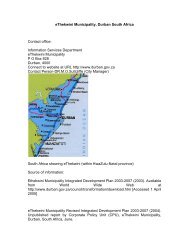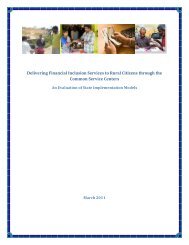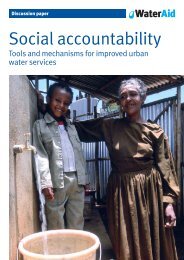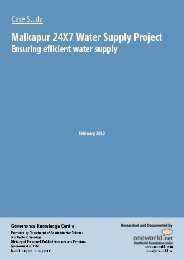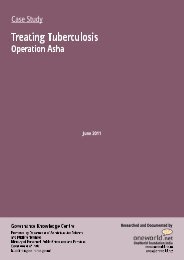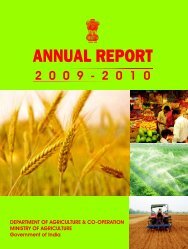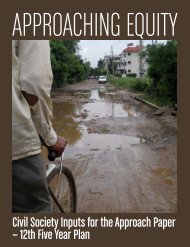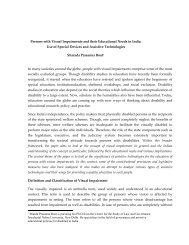See full case study - Governance in India
See full case study - Governance in India
See full case study - Governance in India
Create successful ePaper yourself
Turn your PDF publications into a flip-book with our unique Google optimized e-Paper software.
<strong>Governance</strong> Knowledge CentrePromoted by Department of Adm<strong>in</strong>istrative Reforms and Public GrievancesM<strong>in</strong>istry of Personnel, Public Grievances and PensionsGovernment of <strong>India</strong>Case StudyAgricultureRegional Horticulture Promotion Project,December 2010Transparency and AccountabilityFarmers are taught to build low-cost green houses on their land with locally available bambooand v<strong>in</strong>yl sheets. These green houses support off season production and with this the farmerscan start farm<strong>in</strong>g on their land with a completely new approach.Sell<strong>in</strong>g their ProduceThe purpose of RHPP does not end withtra<strong>in</strong><strong>in</strong>g and cultivation. Their fields arefrequently visited by the RHPP staff toexam<strong>in</strong>e if they are follow<strong>in</strong>g theprocesses and techniques correctly and togive them further guidance wherevernecessary. Farmers are then encouragedto sell their produce at the best possiblerates. For this purpose a shop called the‘Realistic Store’ has been opened on theproject premises i.e. Dr. Graham’sHomes. Here the farmers can sell theirproducts and elim<strong>in</strong>ate the <strong>in</strong>termediaries who were earlier bit<strong>in</strong>g <strong>in</strong>to their profits.METHODOLOGYThe Regional Horticulture Promotion Project (RHPP) was identified as a best practice by theOneWorld research team on the basis of its unique approach towards transform<strong>in</strong>g farmer’slives. It was seen an economically viable and socially susta<strong>in</strong>able <strong>in</strong>itiative, highly suitable forreplication.The team visited Kalimpong to develop a better understand<strong>in</strong>g of the <strong>in</strong>itiative. Semistructured <strong>in</strong>terviews were conducted with the various stakeholders and trips to the greenhouses and the HTC were organized. The researchers <strong>in</strong>teracted with the farmers and visitedtheir fields. They also witnessed the <strong>in</strong>auguration of a new tra<strong>in</strong><strong>in</strong>g session and were present atthe convocation of the outgo<strong>in</strong>g tra<strong>in</strong>ees. All these experiences and <strong>in</strong>teractions helped shapethe teams understand<strong>in</strong>g of the project and gave them a holistic picture which proved to behighly advantageous <strong>in</strong> the preparation of this document.KEY STAKEHOLDERSFIGURE 3: A GREEN HOUSE MADE OF LOCALLY AVAILABLE BASHEETS.LOCALLY AVAILABLE BAMBOO AND VINYL• Dr Graham’s Homes School: A century old <strong>in</strong>stitution Dr. Graham’s Homes does notconf<strong>in</strong>e itself to educat<strong>in</strong>g children and has actively been <strong>in</strong>volved <strong>in</strong> vocational tra<strong>in</strong><strong>in</strong>g6Researched and documented byOneWorld Foundation <strong>India</strong>



